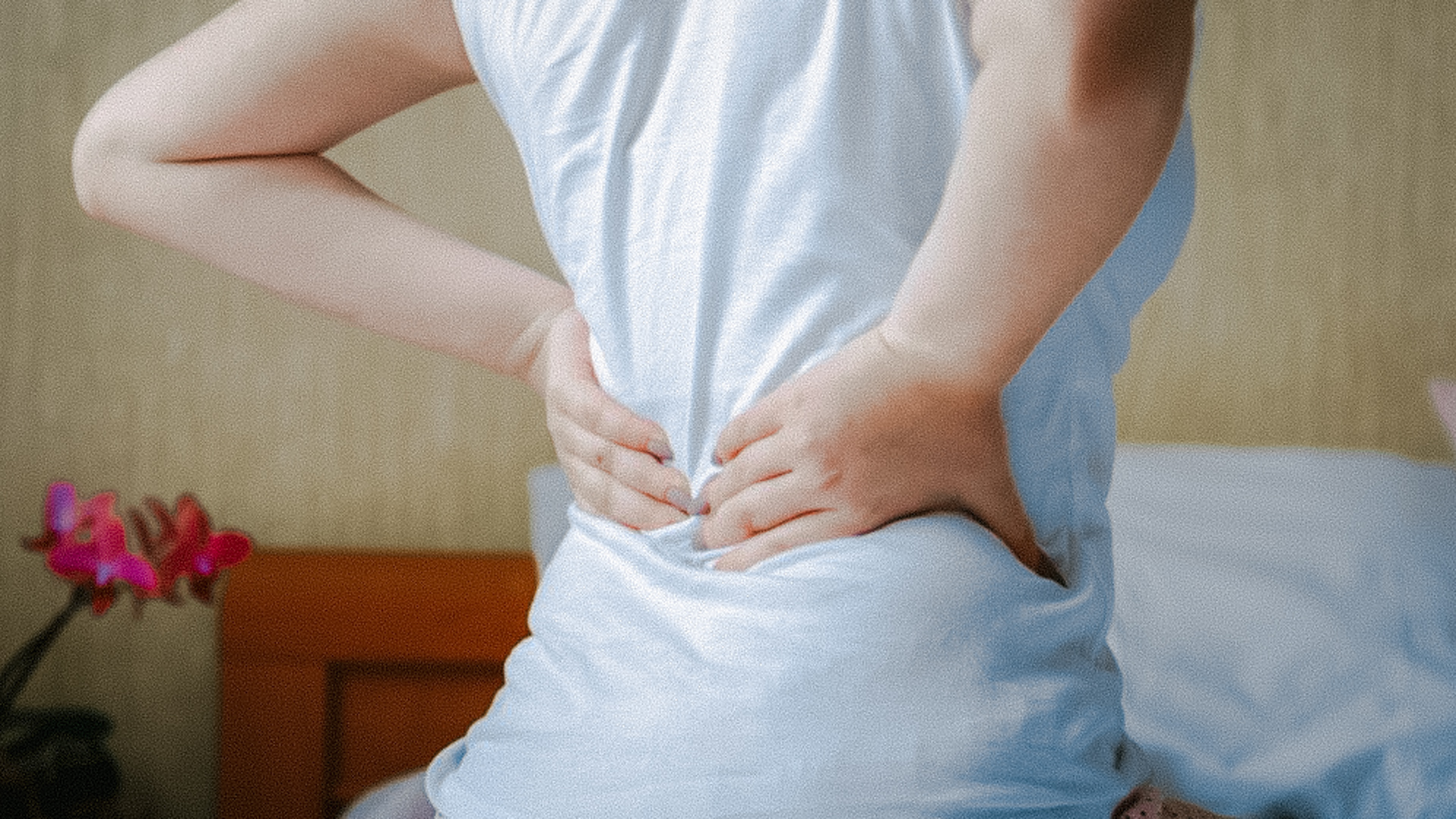How to Relieve Hip Pain While Sleeping

People who have chronic pain tend to have a hard time getting a good night’s sleep. Pain and discomfort can distract you from falling asleep or keep you from falling into a deep sleep, as every little movement causes a flare-up with your pain.
If you struggle with hip pain, then you may have difficulty finding a comfortable position to rest in because of the pressure and strain on your hip joints. When you are unable to sleep well, it can also compromise your ability to heal and recover completely after an injury or from a health condition that is causing you pain. Learn more about how to relieve hip pain while sleeping and about its causes and possible remedies below.
What Causes Hip Pain While Sleeping?
As is often the case, hip pain may become more noticeable or get worse at night when you are trying to find a comfortable sleeping position. Before we get to applicable ways to relieve hip pain while sleeping, let’s look at injuries or health conditions that can lead to hip pain when sleeping.
Hip Bursitis
All of our joints have fluid-filled sacs that offer support to our joints. These fluid-filled sacs are known as bursae and if one of these becomes inflamed in your hip joint, then you may be diagnosed with hip bursitis. This condition is most often caused by repetitive movements that put strain and stress on the joints, leading to inflammation. If you have hip bursitis, your hip may feel achy and stiff, and you might feel pain with certain movements. Hip bursitis can also lead to sharp, shooting pains and swelling and redness in the area.
Tendinitis
Tendinitis refers to inflammation that affects tendons that connect muscle and bone. If you develop inflammation of a tendon in your hip, you might experience pain and discomfort with even the smallest of movements. Irritation and inflammation of tendons can lead to muscle tightness, tenderness, pain, and weakness in the area. Tendinitis is common in athletes who perform repetitive hip and leg movements, like running, swimming, and cycling.
Sciatica
The sciatic nerve is located at the base of your spine and travels throughout your hips, buttocks, and legs. When the sciatic nerve is aggravated or injured, it can cause a specific type of discomfort and pain in the lower back and lower half of your body known as sciatica. Some causes of sciatica are caused by a herniated disc in your lower back or spinal stenosis. If you experience sciatica, you may notice that certain movements or positions can make the pain and discomfort worse. Common symptoms of sciatica pain include tingling, weakness, and numbness, most commonly in one leg.
At-Home Remedies for Hip Pain When Sleeping
If you experience hip pain when sleeping, the first thing you might try to do is readjust your sleeping position. Certain positions can relieve pressure from your lower back, hips, and buttocks.
Sleep on Your Side
One side may be more comfortable than the other, but side sleeping is a great position for relieving sciatica pain. You can even use pillows to help keep a natural separation between your knees and better support your lower back.
Sleep on Your Back
Sleeping on your back may work best for you, but it may require a bit of trial and error. Try putting a pillow (or two) under your knees to relieve some pain. If that doesn’t work or you’re still uncomfortable, try a pillow or rolled-up towel under your lower back as well.
Use Extra Pillows
Sometimes a pillow between your knees or under your back can make all the difference. You might want a body pillow or several extra pillows to help you get even more comfortable and maintain your pain-free position all night long.
You can also try taking a warm bath or icing the area before going to bed. This can help reduce inflammation in the area while also providing pain relief. You should avoid soft mattresses and instead sleep on something firmer. Also be sure to follow good sleep habits, like reducing screen time before bed, avoiding caffeine, and keeping your room at a good temperature. Additionally, you should ask your doctor or physical therapist about helpful stretches and exercises to try before bed that can help stretch out tight, stiff muscles.
How Physical Therapy Can Help
A physical therapist can help provide you with tips and tricks to relieve hip pain while sleeping. This may include stretches and exercises to improve your strength and flexibility in the area. The supportive muscles, tendons, and other soft tissues that support your hip joint need to be strong and flexible in order to provide you with stability. Your physical therapist can also teach you about foam rollers as well as stretches and exercises to do before and after workouts. Performing certain movements and stretches can also help relieve pain if you sit or stand for long periods of time at your job.
Find out more about how you can benefit from physical therapy for your hip pain with PT Solutions. Visit us online or call to schedule an appointment to get started!